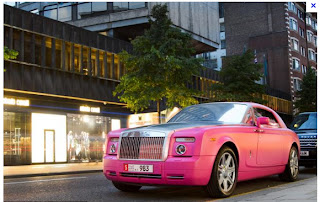This is a conservative market sector and any changes must be sensitively applied. At first glance the vehicle looks to be no different but there are a number of significant changes. The standard “Luxury” version wears a familiar grill but the shape has been altered with the addition of sharper corners and a slightly more pronounced snout, in common with the rest of the range. For the “Sport” version an entirely new grill is fitted with an integral three-pointed star that mimics the SL and SLS sports cars.
The traditional double headlights have finally fused into one lens and there is a more pronounced front lip spoiler at the front. Full LED lights are available and the annoying always-on running lights persist. The Sport version gets the front splitter and rounded air intake treatment while an AMG styling pack is available for the full angular race car front end.
Along the side the stylized ‘Ponton’ wheel arch, that evoked cars of the fifties, has gone, to be replaced by a modern signature “slash” as seen on the new A and B classes. The side sill line has been lowered and the combined effect is to make vehicle look a little longer and less dumpy in the rear three-quarters. The Station Wagon body style in particular benefits from this change.
The rear of the vehicle was always an excellent form and the changes are simple tweaks to make it look a little wider.
The interior architecture will be home-from-home familiar to anybody who has been in a Mercedes in the past few years but there has been a little tidying in places plus the addition of additional trim pieces to harmonize and raise the perceived luxury to S-Class levels.
While the visual tweaks inside and out have been relatively subtle, the E-Class carries eleven newly-developed driver aid technologies under the banner of “Intelligent Drive.” The basis for all this is new state-of-the-art sensors and their associated algorithms. Mercedes-Benz has introduced the Stereo Multi-Purpose Camera which is located on the windshield near the rear-view mirror. This camera features two “eyes,” set at an angle of 45 degrees to produce a three-dimensional view of the area up to 55 yards (50 meters) in front of the vehicle and with an overall range of up to 550 yards (503 meters). The stereo camera gathers data for processing by various systems. They can detect vehicles driving in front, oncoming or crossing and evaluate this three-dimensional visual information to determine their speed and position. They can also identify pedestrians within a large field of vision.
Along with the Stereo Multi-Purpose Camera, Mercedes-Benz is also introducing a new version of the Multi-Mode Radar sensor system. COLLISION PREVENTION ASSIST, a radar-based collision warning system with Adaptive Brake Assist is standard equipment on both the sedan and wagon. It helps to reduce significantly the risk of a rear-end collision. Also part of standard equipment is ATTENTION ASSIST, which now warns of inattentiveness and drowsiness across a wider range, and provides visual information on attention level and time driven since the last break.
Also available are a number of assistance systems that are either new or now feature significantly enhanced functionality:
- DISTRONIC PLUS with Steering Assist can help the driver keep the vehicle centered in its lane and can semi-autonomously follow in-line traffic
- For the first time, the Brake Assist system BAS PLUS with Cross-Traffic Assist is able to detect crossing traffic and pedestrians, and boost the braking power applied by the driver accordingly
- The PRE-SAFE Brake can now detect pedestrians as well and initiate autonomous braking
- PRE-SAFE PLUS can identify an imminent rear-end collision and then prompt the PRE-SAFE system to trigger occupant protection measures that reduce the forces exerted on passengers. If the vehicle is stationary, it can also prevent secondary accidents in the event of a rear-end collision by applying the brakes
- Active Lane Keeping Assist can now detect when the adjacent lane is not clear, including the presence of oncoming traffic, overtaking vehicles, crash barriers etc. Under threat of a collision, even if the lane marking is not a solid line, the system can prevent the vehicle from leaving its lane unintentionally by applying the brakes on one side. This system pairs perfectly with Active Blind Spot Assist
- Adaptive Highbeam Assist PLUS allows high beam to remain permanently switched on without dazzling traffic by masking out other vehicles in the beams' cone of light
- Active Parking Assist enables automated parking with active steering and brake control in both parallel and perpendicular spaces
- The Surround View Camera will cover all four sides of the vehicle and enable a 360-degree view including virtual bird's-eye perspective; a top view of the vehicle and its immediate surroundings. Dynamic guide lines help during parking and maneuvering
- E250 BlueTEC: 2.1-liter 4-cylinder turbodiesel: 190 hp
- E350 Sedan: direct-injection 3.5-liter V6: 302 hp
- E350 4MATIC Wagon: direct-injection 3.5-liter V6: 302 hp
- E400 HYBRID Sedan: electric motor and direct-injection 3.5-liter V6: 27 hp + 302 hp
- E550 4MATIC Sport Sedan: turbocharged direct-injection 5.5-liter V8: 402 hp.






 3:46 AM
3:46 AM
 Unknown
Unknown
















































